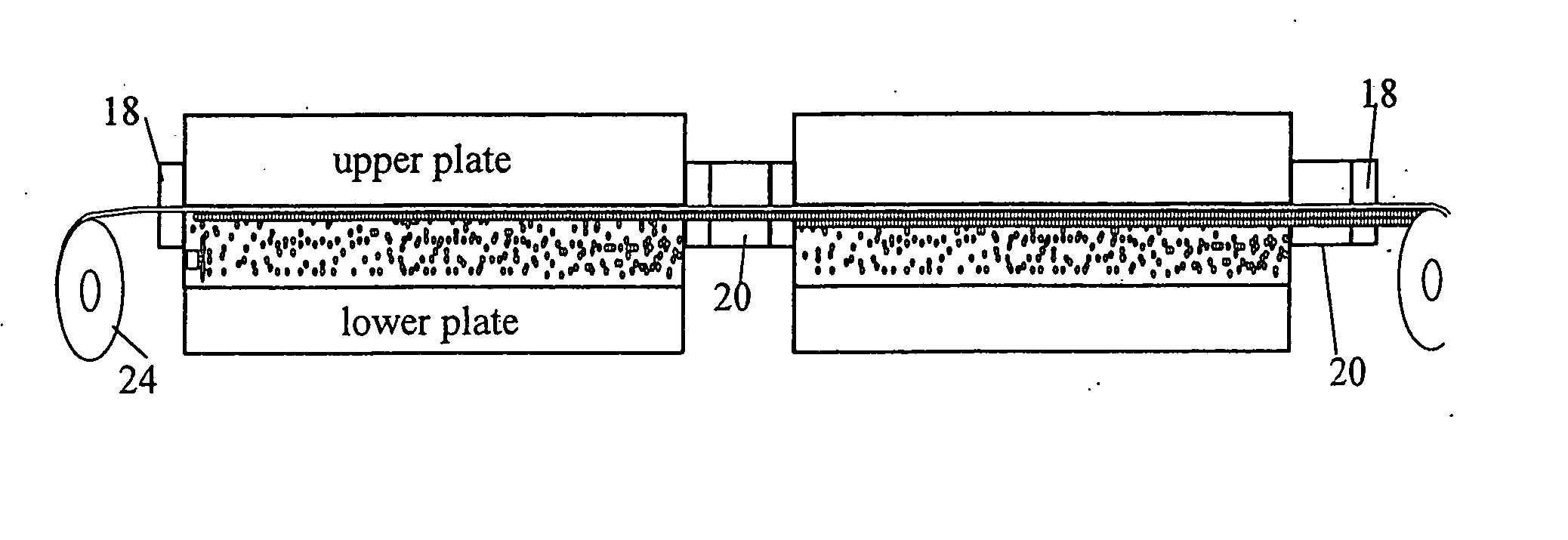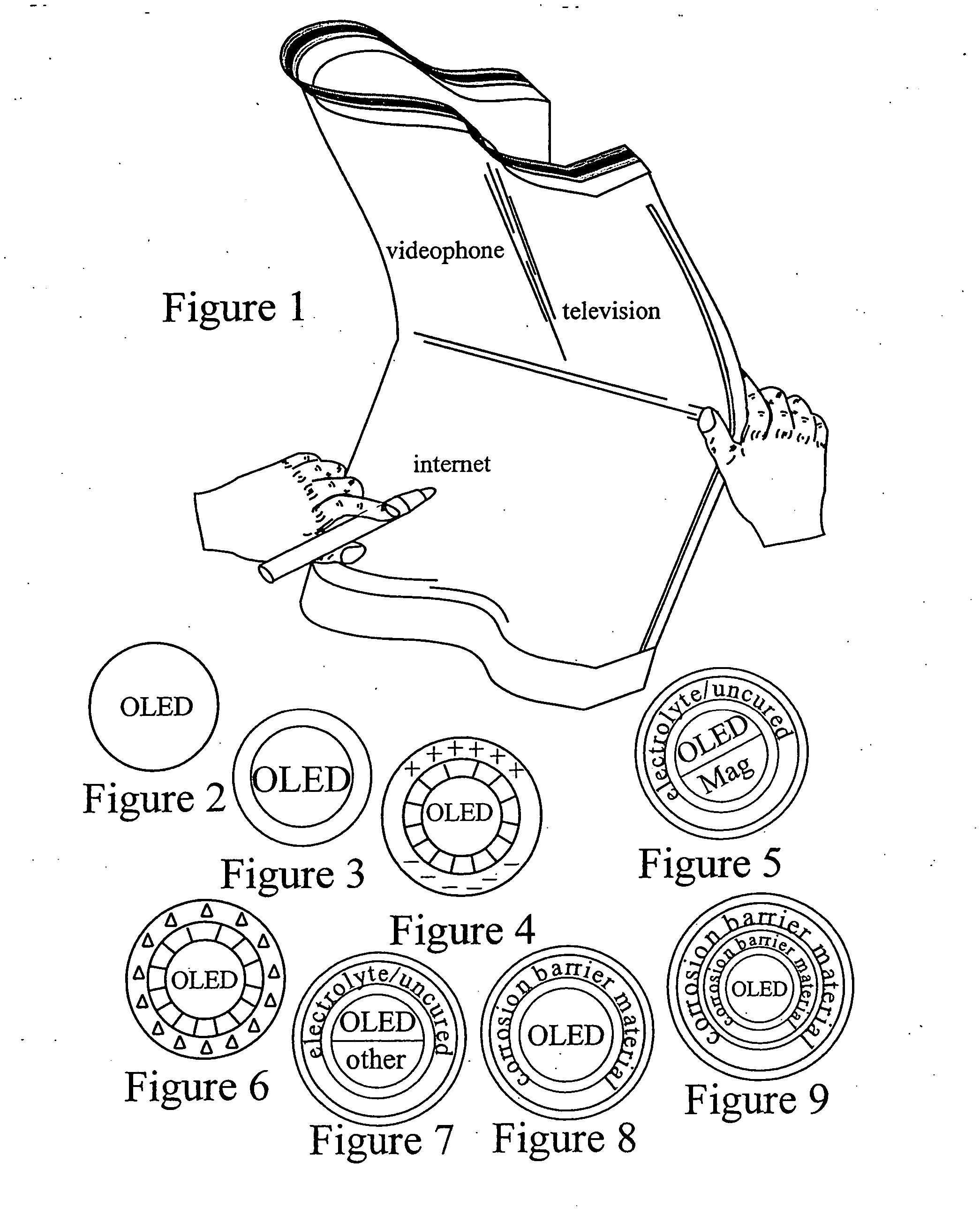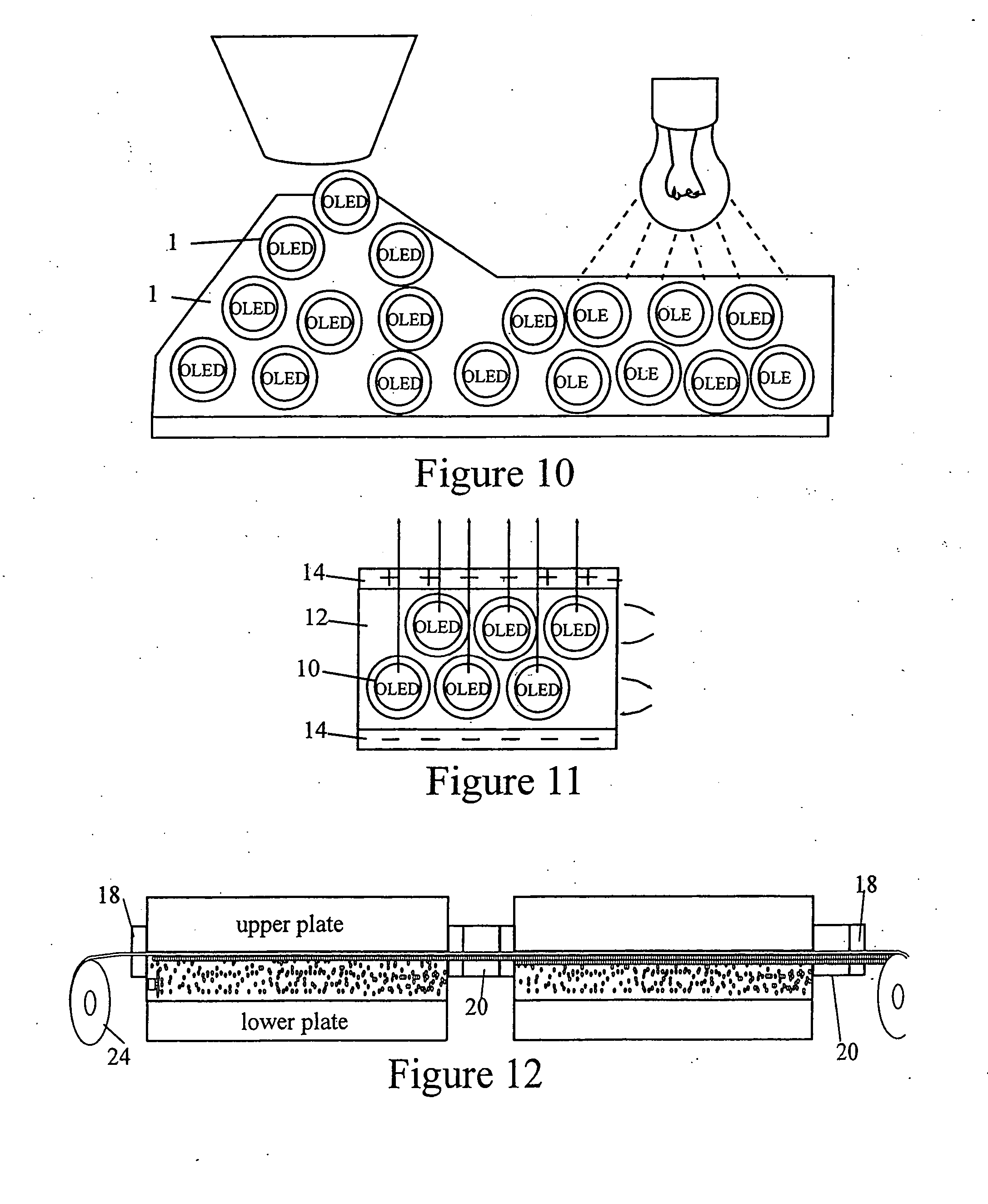Further, the absorption of light by the semiconductive
polymer results in positive and negative charges that produce an
electric current.
The unstoppable march of technology often changes the way we see the world.
This issue is exacerbated when non-glass substrates are used.
Neither of these solutions is adequate, adding to the cost and complexity of forming an
OLED device.
In the end, the problems caused by the ingress of water and
oxygen to the organic stack continue to
pose serious technical issues. FIG. 111 illustrates a prior art
OLED device.
Such thin
layers of organic material are susceptible to major problems, such as loss of film integrity, particularly when applied to a flexible substrate. FIG. 112 illustrates a prior art OLED device wherein a dust spec creates an electrical short between the electrodes.
The extreme thinness of the
layers of organic material between conductors also results in electrical shorts easily forming due to even very small specks of dust or other contaminants.
Because of this limitation, costly
cleanroom facilities must be built and maintained using the conventional OLED thin film fabrication techniques.
However, there are some serious disadvantages to the adapting of
inkjet printing to OLED display fabrication.
Elaborate and expensive materials and fabrication processes are still required to provide adequate encapsulation to protect and preserve the thin organic films.
It is difficult to align display pixel-sized electrodes and inkjet printed OLED material with the accuracy needed to effect a
high resolution display.
However, there are still some technical hurdles that remain to be solved before OLED displays will realize their commercial potential.
One of the biggest challenges to the OLED display industry is from
contamination by water and oxygen.
It is generally very difficult to form the electrodes with the precise alignment needed for forming a pixilated display.
This task is made even more difficult in a multicolor display, where the OLED pixels emitting, for example, red, green and blue, are formed side-by-side to fabricate a
full color display.
However, the
electrode alignment issue still poses a problem.
Aligning the shadow masks is difficult, and requires extreme precision.
However, there are some serious disadvantages to the adapting of
inkjet printing to OLED display fabrication.
It is still difficult to lay down precise
layers of material using the spray heads of inkjet printers.
Elaborate and expensive materials and fabrication processes are needed to provide adequate encapsulation of the display elements to prevent early degradation of the OLED material due to water and oxygen ingress.
It is difficult to align display pixel-sized electrodes and inkjet printed OLED material with the accuracy needed to effect a
high resolution display.
Electrical shorts and the destruction of pixels result from the inclusion of even miniscule foreign particles when forming the organic thin film layers.
To limit this serious drawback, the conventional fabrication processes requires the use of expensive clean room or vacuum manufacturing facilities.
These thin films must also be deposited very uniformly and precisely, which has proven extremely difficult to do.
These thin layers of organic material are susceptible to major problems, such as shortened device lifetime due to ingress of water and oxygen, and
delamination, particularly when applied to a flexible substrate.
The extreme thinness of the layers of organic material between conductors also results in electrical shorts easily forming due to even very small specks of dust or other contaminants.
Because of this limitation, costly
cleanroom facilities must be built and maintained using the conventional OLED thin film fabrication techniques.
Organic light emitting devices offer tremendous potential due to the inherent qualities of the organic materials, however, the current state of the art fabrication methods are limiting the delivery of this potential to the
consumer.
 Login to View More
Login to View More 


